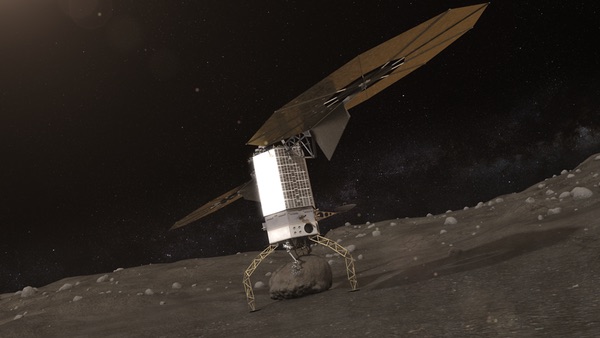Staying course on the Journey to Marsby Louis Friedman
|
| The current Journey to Mars strategy allows NASA to achieve the first human spaceflight beyond the Moon five to ten years faster than any other approach and at a cost roughly within current guidelines. |
The first option creates an American decline. So too does the second, repeating an accomplishment we made 40 years ago, at much higher cost. That the Constellation program by 2008 had already delayed the human landing on the Moon until at least 2028 vividly demonstrates that bearing the cost of lunar landings and infrastructure while building a launch vehicle and human capability to reach Mars is unsustainable. The third choice, with astronauts in cislunar orbit operating on an asteroid in 2025, is the only one that utilizes Congress’ SLS/Orion investment to enable human space flight to reach beyond the Moon and permit new American accomplishments and leadership in human space exploration.
The current Journey to Mars strategy allows NASA to achieve the first human spaceflight beyond the Moon five to ten years faster than any other approach and at a cost roughly within current guidelines. This is in marked distinction from the National Research Council’s wish for bigger budgets or, in their absence, just to give up on the human Mars goal. The current strategy provides for the necessary rocket and technology development to reach and ultimately land on Mars while still providing accomplishments and experience for humans in space. The program is sustainable because it sets up milestones for the journey that are both publicly engaging and meaningful steps into the solar system without unrealistic program requirements for huge budget increases.
The first step, the Asteroid Redirect Mission, does something uniquely American: move a piece of the solar system to provide a stepping stone for astronauts to go further and longer into space than ever before. It would be the first human contact with a celestial body since the Apollo program and provide valuable science and operations experience for future human ventures both in exploration and for putative commercial benefits. It also creates a cislunar outpost led by the US that can support international interest in lunar objectives, much like ours of 40 years ago. Beyond that first asteroid mission, many options exist to extend human flight into the solar system: to asteroids deeper in space, to the Martian moons Phobos and Deimos, and for applying new long-duration human spaceflight, electric propulsion, and in-situ resource utilization technologies to ease requirements and costs for human spaceflight.
Many in the space community wish for more money and faster timetables. You in Congress know better than anyone that those wishes do not create reality. The 2009 Augustine Committee finding about the unsustainability of the earlier human program should not be ignored. Nor should the experience of the last 40 years, which saw human spaceflight confined to low Earth orbit with repetitive activities that were literally mundane when compared to the exploration steps that are defined in the Journey to Mars strategy. Wisely now those low Earth orbit activities are making their way into the commercial sector, freeing up NASA to set its sights to Mars.
| Staying on course on the Journey to Mars will renew public interest and confidence in human space exploration and the American program to lead it. The Journey is exciting. |
NASA does not yet have a plan for its now generally agreed-upon space exploration goal, human missions to Mars. It would be a mistake if they did. A plan now, without a specified and approved program and with many options for mission design and technology development, would be premature and wasteful. It would force both a timetable and cost estimates that, by their very definition, would be unrealistic and unsustainable. A premature plan might foreclose some of the options cited above for reaching into the solar system, years before the requisite experience is gained to make the best choices.
What NASA does have is a strategy: the Journey to Mars. It adopts the flexible path out of Earth orbit proposed by the 2009 Review of Human Space Flight Plans Committee, chaired by Norman Augustine. It uses a “go-as-you-pay” approach to overcome the previously unsustainable approach to human spaceflight. In this highly political year, with many uncertainties, this is a sound approach. More importantly, staying on course on the Journey to Mars will renew public interest and confidence in human space exploration and the American program to lead it. The Journey is exciting.
